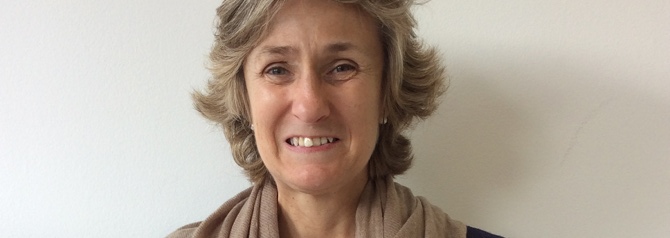Prof. Maria Cuevas, Professor at the Faculty of Fine Arts of the UCM (Universidad Complutense Madrid)
Wearable Computing Art(ifacts). Theories, methods and practices
Maria Cuevas kommt im Rahmen eines Austauschs mit der UCM Madrid an die Münchner Kunstakademie. Sie stellt den Studierenden ihr Thema "Wearables" zunächst in einem Vortrag vor und wird dann in einem Workshop mit ihnen ein interaktives tragbares Kleidungstück entwickeln.
Prof. Maria Cuevas, Professor at the Faculty of Fine Arts of the UCM since 2007. Doctor of Fine Arts. Member of the research group UCM: Chromatic Research: technical, formal and meaning in colour expression through art aspects. She has participated in conferences and has given lectures and seminars related to technology, colour and constructive poetics of space representation. Currently she is working on the design and development of interactive installations and environments and is conducting research on ways to view the complexity and order and development of the Wearable Computing Art (iFacts).
Maria Cuevas „ Wearable Computing Art(ifacts). Theories, methods and practices”
In contemporary art, Wearable Computing Art(ifacts) represent a form of expression and communication with unlimited development potential. The idea of incorporating technological elements into the design of creative processes has altered our perception of the project. The emerging artistic proposals merge art, science and technology. Artists have transformed their traditional concept of a work of art into the specification of a system capable of managing a complex set of concepts, experiences and know-how that enable them to design, not an independent physical object, but an interactive interface capable of being propositional. They propose the design of devices and systems capable of transmitting emotions, experiences and meaning.
The aim of this proposal is to investigate the situation of artistic practices located in the context of Wearable Technologies from the perspective of the creator, of the practitioner, in order to find artistic strategies that can highlight a new viewpoint of the situation.
The path opened up is full of stimulating concepts and creative possibilities. Mobility, portability, smart surroundings, pervasiveness, user-centred design, social media, user communities, wireless connectivity, interactivity, functionality, interfaces,… these are all concepts linked to a kind of contemporary artistic practices originating in the large volume of data available in contemporary computerized societies and in the ability to process these selectively so as to extract significant information and personalized contents from their inter-relationships.
A world saturated with accessible technologies and packaged technological systems. Sometimes marketed as standard solutions and other times designed to perform functionalities suggested by the artists or designers themselves.
Working methodologies that enable us to develop more complex ways of thinking through the discovery of new relationships between concepts, objects, messages, subjects,... that would have gone unnoticed without the use of such technologies. A new world of opportunities in which to be able to define and experience new man-machine interaction models. A working environment in which the design of creative systems focuses on the user and on their relations with their day-to-day setting. A new strategy for us to communicate with reality. A commitment to work with creative processes related to other areas of cognitive work and other professions: electronic engineers, computer analysts, software developers, designers, artists,… A procedural, interdisciplinary, collaborative and interactive work.

